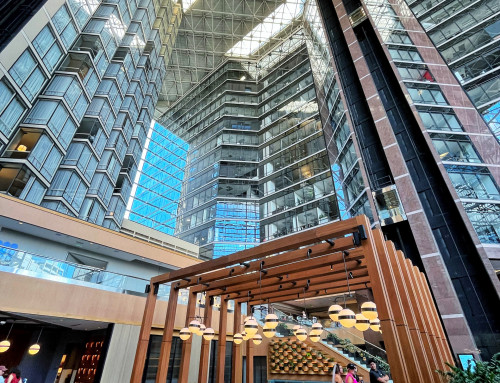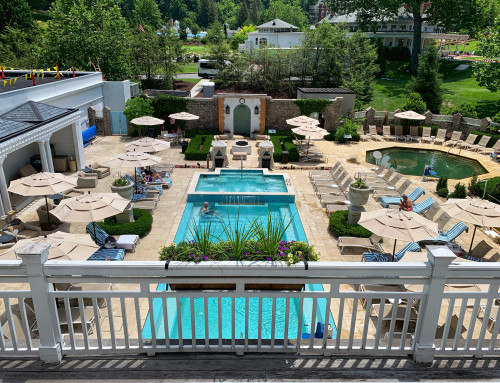Christmas day 1492, a clumsy cargo ship runs aground on the north coast of present-day Haiti. Emerging from the Santa Maria was Italian-born explorer, Christopher Columbus. Not exactly the Orient he was in search of, but nevertheless this “beautiful island paradise” would please his benefactors. After receiving a generous welcome from the native Taínos, Columbus promptly claimed the island for the king and queen of Spain, naming it Hispaniola, or Little Spain. While Columbus would make three more voyages to Hispaniola, this would be the end of the road for his flagship Santa Maria. The vessel was disassembled and used to build a fortress named La Navidad. Thirty nine crewmen stayed behind to man the “New World’s” first Spanish settlement and comb the island for gold mines and other easy wealth.

Columbus was given a hero’s homecoming back in Spain, but upon his return to Hispaniola in 1493, the expedition found La Navidad in ashes and the men missing. Having muscled their way around the island, a powerful Indian chief lost patience with the garrison, destroying the fort and killing the men. Ignoring the shaky relationship with the locals, Columbus stayed on task. A gold rush began and the riches rolled in! This same year, the Pope, convinced the island’s limitless wealth could fund another crusade to the Holy Land, divided the New World between the Catholic countries of Spain and Portugal. This act not only reinforced their maritime supremacy throughout the known world, but predictably left the other European nations green with envy. This envy would eventually rear its’ ugly head in the form of piracy and war.
Not disheartened, Columbus selected a spot farther east along the north coast of Hispaniola (in modern day Dominican Republic) to establish another colony named La Isabella, for the Spanish Queen. During the first decade, the relationship between the Spanish and the Taínos completely deteriorated. Indians were massacred, their villages systematically destroyed and a wholesale enslavement policy was enacted. The combination of forced labor and the Taínos’ insufficient immune systems against European diseases brought about their quick demise. Within a decade, the indigenous population was obliterated and Spain was in control of Hispaniola.
Finding the buggy north coast unsuitable for their settlement, Bartholomew Columbus, Christopher’s brother moved the capital to the south side of the island. Santo Domingo was founded in 1496 and soon became a wealthy and powerful city, serving as Spain’s premier Caribbean outpost. It was from here Spanish conquistadors such as, Cortez, Balboa and Ponce de Leon launched expeditions into Mexico and America. More importantly, Santo Domingo was made a seat of the Spanish royal court from which the New World’s governors would rule. Bartholomew served as the New World’s first governor, but his unpopularity forced the Spanish king to replace him with Nicolas de Ovando, under whom Santo Domingo would grow and flourish.

It was in this fortress Christopher Columbus’s son, Diego came to Hispaniola and lived with his wife until the completion of their palace in 1514. The Alcazar de Colon, with its brick and stone façade and arched entranceway, combines an elegant Spanish country home with that of a Moorish stronghold. For sixty years, this fortified palazzo housed and protected Hispaniola’s Spanish Court.
Within three decades of discovery, the Dominican gold mines were exhausted. Spain’s expansionary focus- and defense money- was diverted to North America. Military threats, likewise, shifted to the mainland colonies, but a different type of invader threatened the island- pirates! By the 1560’s, government-funded privateers, small-scale raiders and all sorts of nefarious characters swarmed throughout the Western Caribbean. Hefty walls were built along the Ozama River to repel naval attacks on Santo Domingo, but eventually proved defenseless at the hands of notorious English pirate, Sir Francis Drake- or as the Spanish called him, “El Draque” (The Dragon).

In 1585, long time rivals, England and Spain went to war. Queen Elizabeth I wanted her fair share of the New World. She gave her favorite gentleman pirate, Sir Francis Drake permission and funding to harass the enemy and seize treasures from Spanish-held territories. Privateers of the Elizabethan era were often well-connected, wealthy shipmen through whom a monarch could wage war by proxy. The royal treasury had a lot to benefit by backing a pirate and taking a cut of loot! Should these swashbucklers run amok, she could easily wash her hands of their piratical behavior.
Drake was among the most feared and revered privateer of his time. This crown-sponsored sea dog made quite a name for himself, looting cargo ships and pillaging ports throughout the Caribbean. On New Year’s Day 1586, the bane of Spain sailed into Santo Domingo. To experience El Draque’s twenty-ship fleet sailing into the harbor would have been one of the scariest sights in the sixteenth century Caribbean. Tales recall the residents of Santo Domingo readily giving up their treasures and the Spanish garrison easily being driven out of the city. Santo Domingo fell to Drake virtually unopposed. In typical pirate fashion, the crew plundered the city till there was no more. Drake held Santo Domingo ransom, burning it bit by bit, until England received a hefty sum from the Spanish king.
As a protestant in an era of violent religious reform, Drake held little regard for his Catholic enemy. Destroying anything Spanish or Portuguese was fair game and plundering for God and country allowed for raiding of dubious legitimacy. Drake had no qualms about trashing Santo Domingo’s religious houses. In 1514, Diego Columbus laid the foundation stone for the New World’s first cathedral, Catedral de Santa Maria. It took three decades to complete, but only one day to destroy! The imposing arched entrance way, known as the Gate of Pardons, was once adorned with statues of saints, but they too fell victim to Drake’s marauding. The beautiful cathedral, with its unique synthesis of gothic, Renaissance and Baroque styles, was ransacked and served as Drake’s headquarters and a prison. The English were renowned for iconoclastic mutilation of statues, crucifixes and religious paintings. Church treasures were carried off and the records destroyed. Likewise, the San Francisco Monastery, built around 1508, was put to fire during Drake’s invasion. To this day, its skeletal remains stand hauntingly in the middle of the city while Mother Nature finishes the job Drake started. Once the city’s ransom was paid and when there was nothing left to exploit, Drake moved on. His attack instantly weakened the Spanish dominion over the island. Santo Domingo was left to the mercy of a new breed of pirates- the buccaneers.
By the early-seventeenth century, peace among the European nations left thousands of English and French sailors unemployed with few promising career choices. Many took up residence on various islands throughout the Caribbean. Unlike privateers of the earlier century who raided out of hatred of Spain and loyalty to their queen, these pirates were “men of the sea,” driven more by a love for loot, than a love for country. Naturally, they were lured to Hispaniola where royal galleons and treasure laden ships sailed frequently through its waters from North America. Also, Hispaniola was particularly attractive for its herds of wild cattle and pigs introduced by Christopher Columbus as a source of food for the early settlers. The hordes of hungry Frenchmen smoked their meat over open barbeques called ‘buccans,’ earning the nickname ‘buccaneers.’

Hispaniola’s ever-growing buccaneer population didn’t sit well with Spain, whose resources were stretched thin and power on the decline. Determined to rid themselves of these lawless rogues, Spanish hunters were sent to slaughter the pigs, hoping the lack of food would drive the roving pirates out, but the plan backfired! Rather than hit the high seas, the French and Englishmen dug in. A motley crew of runaways, deserters, shipwrecked sailors and religious refugees set up shop on an island just off the north coast of Hispaniola. This would serve as their principal base for raids and play a key role in the history of piracy. It was during this period that the close association between pirates and buccaneers would merge into today’s romantic vision of the quintessential swashbuckler. Tortuga, a rocky, turtle-shaped island off the coast of Haiti, became the base of operations for fifty years of raiding by French, English and Dutch buccaneers. Tortuga was a popular sanctuary for its fertile land and discreet harbors with good anchorages. Renaming themselves “Brethren of the Coast,” each buccaneer took an oath to uphold a strict code of rules set forth in the Custom of the Coast.
Among the most famous pirate to pledge his allegiance was Welsh-born Henry Morgan, also known as The Pirate King. In 1654, Morgan took part in an unsuccessful English attack on Santo Domingo, after which he became an active privateer with the Brethren of the Coast, unofficially sponsored by the English government. After a decade of chasing Spaniards around the Western Caribbean, Henry Morgan ended up second in command of these famed buccaneers. In 1666, the first in command died and Morgan was promoted to Admiral of the Brethren of the Coast. He spent a majority of his life harrying Spanish ports throughout the West Indies and Panama. Morgan was one of the few pirates ever knighted and died in 1688 as the Governor of Jamaica. This brave and controversial Captain Morgan is now (figuratively) preserved in his namesake Jamaican rum.
During the next century, many of history’s most notorious pirates and privateers found their way to Santo Domingo, including the famed Edward “Blackbeard” Teach, who dropped anchor in Hispaniola in 1718, just a few months before he went to his watery grave off the coast of North Carolina. Less prolific than Morgan and Blackbeard – and far less fortunate- was Captain William Kidd, “The Unlucky Pirate” who sailed into Hispaniola in 1699 to swap out his ship, just narrowly escaping authorities. Jean Lafitte, the gentleman pirate of New Orleans lived in Santo Domingo while under French rule during the Napoleonic wars. Despite the violent ending for many pirates, these admirable rogues, bloodthirsty criminals and untamed spirits live on in poems, ballads and legends. Their spirits are felt throughout the Dominican Republic.

Today, Santo Domingo is a vibrant, bustling city of two million people with the typical modern urban sprawl. Parts of the original city are preserved in the Colonial Zone, where a wander along narrow streets propel visitors back in time to Renaissance Spain. A wonderful collection of sixteenth century palatial homes, churches and towers complement a wide range of historical artifacts on display in more than a dozen museums, including cannonballs lodged in a door during Drake’s attack. The importance of Santo Domingo’s position in history was recognized in 1994 when the America’s first city was deservingly designated a World Heritage site by UNESCO.
Wanderlust Tours owner and travel director, Shawnie Kelley, studied architectural history and worked as an architectural historian for both Historic Scotland and English Heritage. She conducts tours through many of Europe’s great castles and cathedrals and has traveled extensively all over the Dominican Republic since 1996.
COPYRIGHT: Shawnie Kelley (This article was originally published in Renaissance Magazine, issue #56)







Leave A Comment